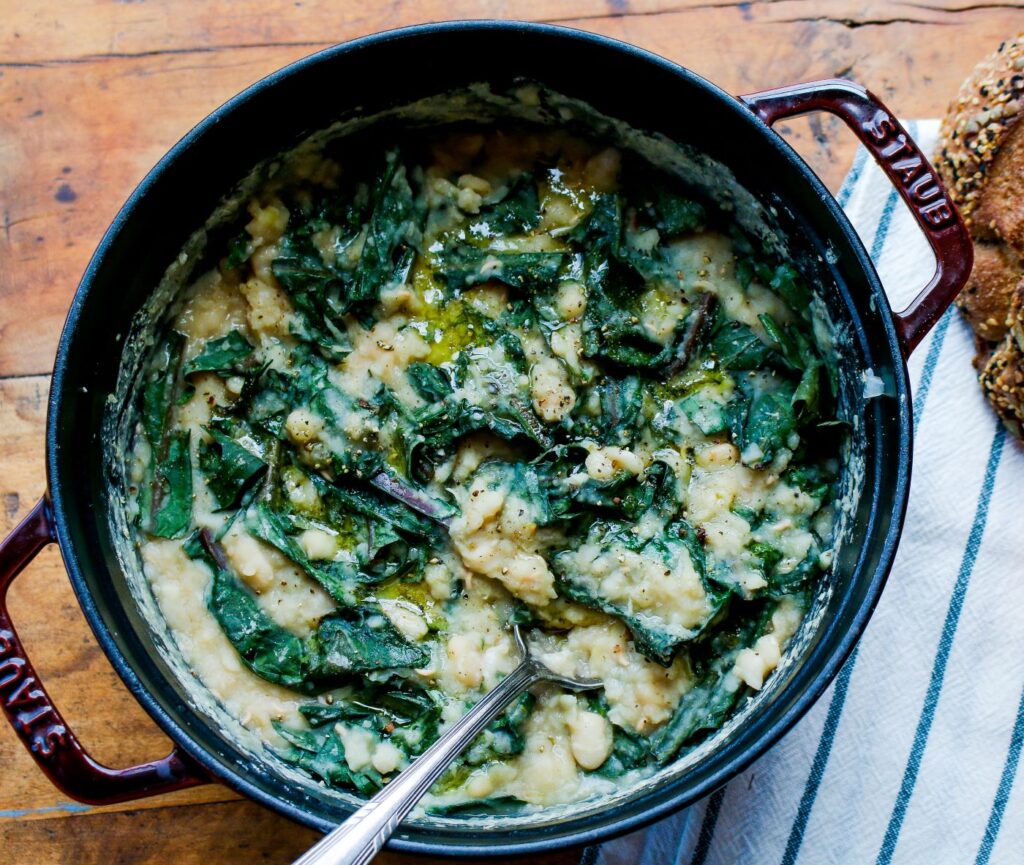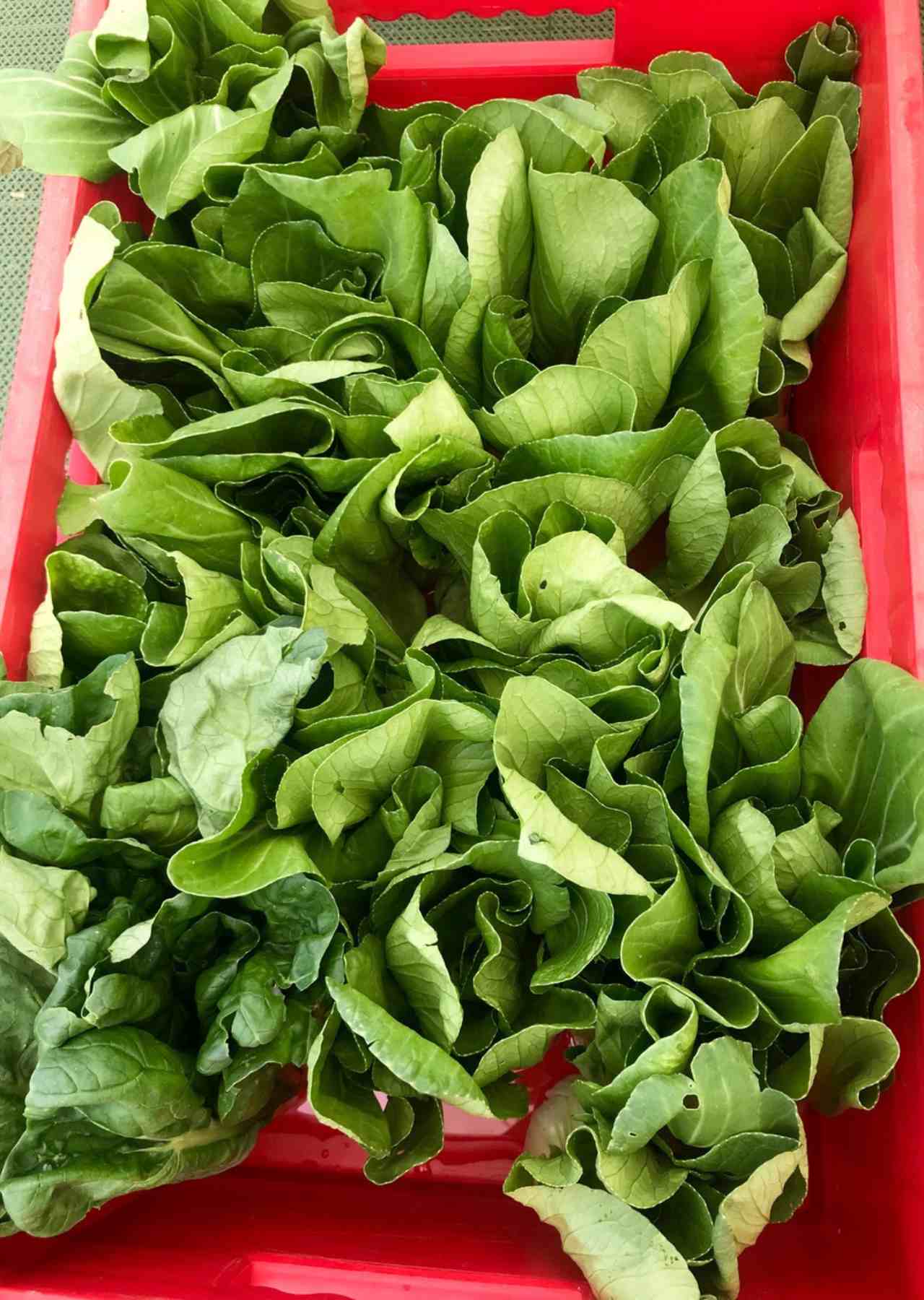
Wondering how to cook your daily greens, such as turnip greens, winter greens, and mixed greens? I’m answering your top questions on the best, most nutritious way to use all greens (one of the healthiest foods on the planet) in your diet every day.
When was the last time you genuinely enjoyed eating a leafy green vegetable? If you answered, “well… never,” I’m here to convince you otherwise. The variety of greens grown around the world is limitless—kale, spinach, bok choy, broccoli, arugula, turnip greens, mustard greens, radish greens, and so many more! The first step is answering some common questions about the best ways to enjoy greens.

For example, wondering how to cook mustard greens? Are you questioning, what are collard greens? Looking for tips on instant pot collard greens? I’ve got you covered in this expert Q&A on the best way to enjoy them. It’s all based on the idea that it’s a good idea to eat them daily, particularly when you eat a plant-based diet, because of that rich cache of nutrients, some of which can be difficult to get on plant-based diets. No matter where you’re shopping, whether at the local grocery store or farmers market (and don’t forget growing them yourself, as they are among the easiest vegetables to grow), you can discover new ones that you’ve never even heard of before. They may look similar, but there are distinct differences that are worth exploring.

Once you do, you can start to unlock how to enhance greens in new ways, like seasoning them with lemon, cinnamon, even a dash of balsamic vinegar, and cooking greens, from a standard sauté to the roasting pan or a fun sizzle on the grill. Greens are also the perfect way to sneak nutrients into your family’s diet (without them ever knowing) in sauces, pastas, soups, and smoothies. Today, I’m here to answer your top questions on how to boost your enjoyment of delicious, nutritious greens.


Question: There is such a big variety of greens, especially in late spring/early summer—can you recommend a few types to try?
Sharon’s Answer: There are so many options that are available beyond the basic romaine lettuce and spinach leaves! In a well-stocked supermarket, you can find little gems, types of kale, chard, mustard greens, collard greens, escarole, and arugula. And if you visit a farmers market, you can really become introduced to an even wider array of greens, such as mizuna, dandelion, turnip greens, radish greens, collard greens, mache, bok choy, radicchio, and more. You can also forage for some of these, or grow them so easily in your garden. It’s very satisfying, as they pop up quickly and you can give them a little “haircut” to harvest greens, and then they just keep popping up with new regrowth in the form of baby greens. Start by expanding your knowledge—try a new variety of kale (there are many kales, such as curly or lacinato, and they even come in different colors, such as purple and shades of green), then expand your knowledge to try some different types, such as mustard or collard greens, or some of the beautiful Asian ones, such as bok choy and pea shoots. Keep track of which you prefer, and constantly push the envelope to try something new.

Question: What are a few easy, yet flavorful ways to cook greens?
Sharon’s Answer: One of the best ways to get familiar with them is to sauté them quite simply, by heating a small amount of olive oil and garlic in the sauté pan, tossing in your washed, drained, chopped greens, a squeeze of lemon juice, and do a quick sauté until they are just barely wilted but remain bright green. This literally takes minutes. From there you can accent them with an herb or spice, such as cayenne pepper and oregano. Another way to try them is in pasta dishes. Simply get your pot of pasta cooking, and then heat up a skillet with a small amount of olive oil, garlic, and chopped onions, then add your chopped greens, lemon juice, and a can of white beans, and saute until they are just barely wilted. Season with basil, red chili flakes, and a touch of salt. Then toss your cooked, drained pasta in your pan. You have a plant-based meal on the table in 10-15 minutes! Try your more tender, sweeter greens like mache, pea tendrils, and baby arugula, in a big salad bowl with your favorite veggies (tomatoes, avocado, red peppers), nuts, and vinaigrette.

Question: What seasonings and add-ins work well with greens? Is it true that they should be prepared with a fat for better nutrient absorption?
Sharon’s Answer: Garlic is a must, and lemon juice will keep the colors fresh and offer some brightness to the flavor profile. A hint of spice is nice, such as cayenne, red chili flakes, or sriracha sauce. A variety of Mediterranean herbs, like oregano, thyme, and marjoram, work nicely too. It’s a good idea to have a small amount of fat at the meal to help absorb the nutrients. It doesn’t take a lot, just a spoonful during sautéing—plus they taste a lot better that way.

Question: What about trying a new green raw, like in fresh salads or smoothies?
Sharon’s Answer: Yes, you should try a variety in your fresh salads, too. These can add more diversity to your diet, more nutrients and phytochemicals too—not to mention flavor and good looks. Try the sweeter, more tender greens for fresh salads, such as little gem, mizuna, arugula, escarole, mache, pea tendrils, baby kale, or oak leaf—and try different colors, there are so many shades of green and purple that provide different nutrition profiles. Create really satisfying amazing salads that have cooked whole grains (i.e., barley, farro, quinoa), pulses (beans, lentils), veggies (cherry tomatoes, snow peas, radishes), healthy fats (olive oil, avocados, nuts, seeds) and a simple vinaigrette. In addition, you can add any type of green to a smoothie and power up on those veggies. You can even try something a little darker and more pungent, such as chard, collard, and kale in your smoothie. Make sure to balance it out with a nice fruit, such as berries, bananas, or mangos. Puree long enough to be very silky in texture.

Question: Don’t they cook down a lot? Can I really add a big bunch to the pan?
Sharon’s Answer: That’s right—they really cook down. Your skillet may be overflowing, and you worry that you’ve made a mistake by over packing them, but alas, they will shrink down to a very small amount after cooking. This is also true of baking with greens. I always add a layer of them to my veggie lasagna, and that will shrink down to a small layer when you pop it out of the oven. That’s one of their nutrition powers; when you cook them, you are condensing down those nutrients and you are getting a lot in a serving. They are one of the most nutritious plant foods from Mother Earth.
Try these recipes that will inspire you to eat more greens:
Pistachio Turmeric Rice Power Bowl
Blood Orange Hazelnut Kale Salad
Vegan Pasta with Creamy Spinach Ricotta Sauce
Swiss Chard Pecan Lasagna
Scrambled Turmeric Tofu
Greek Mizuna Salad with Sumac Vinaigrette
Check out the other nutrition questions I’m answering at The Plant-Powered Dietitian:
How Can You Grill Plant-Based Foods?
How Do I Eat to Keep My Thyroid Healthy?
Why Don’t I Lose Weight on a Plant-Based Diet?
Is Pea Protein a Good Choice?
